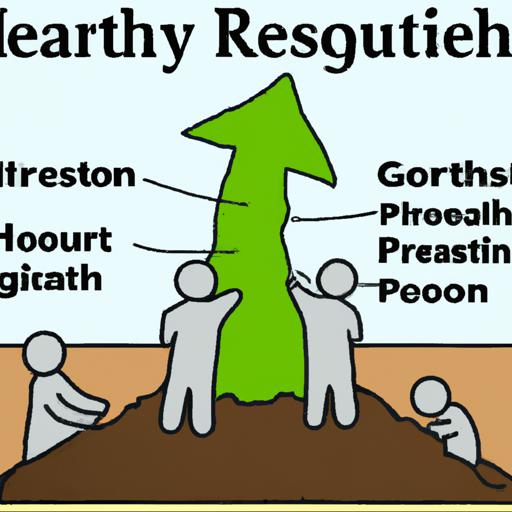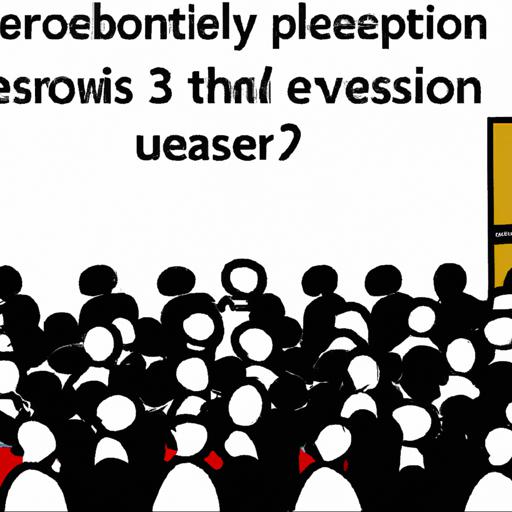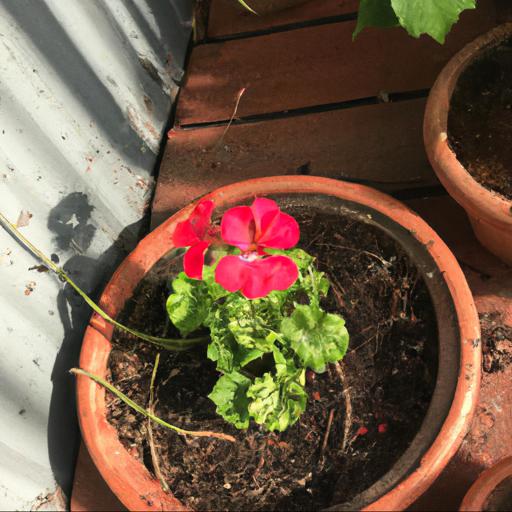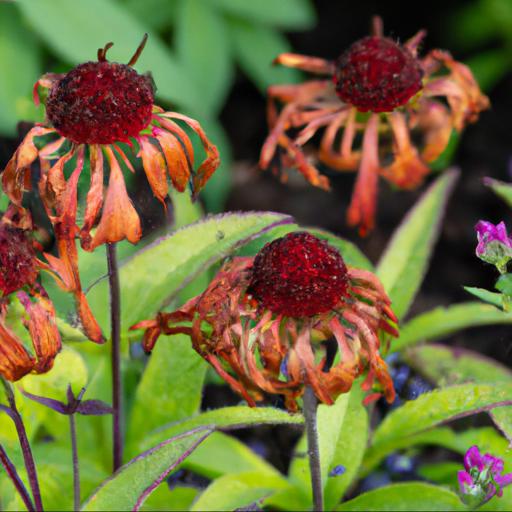Are you looking for ways to keep your garden looking its best? Cutting back perennials after flowering is one way to do just that! There are three main reasons why you should consider cutting back your perennials once they have finished flowering.
Firstly, it encourages new growth and promotes a bushier, fuller plant. Secondly, it helps to prevent diseases and pests from taking hold in the garden.
Lastly, it can help to extend the flowering season of your perennials. So, if you want to keep your garden looking its best, consider cutting back your perennials after flowering.
Reason 1: to promote healthy growth

Cutting back perennials after they have finished flowering is crucial for healthy growth and to promote lush, lush blooms during the next flowering season. As a UK garden expert, I would like to explain why pruning and maintaining perennials are an important step any gardener should take.
Firstly, cutting back perennials prevents the chance of infection or disease and keeps the plant looking fresh and healthy Removing any dying and diseased foliage reduces the risk of any nearby plants becoming unwell and encourages healthy growth of neighbouring flowers.
It’s especially important to remove any seedheads which may have appeared at the end of the flowering season. If left in place, these may transfer disease to other plants through pollen or spores. Secondly, trimming back perennials ensures that it retains its size and shape, providing a neat and uniform appearance in your garden bed.
It also prevents the slender roots of the plant becoming crowded and competing with neighbouring plants for nutrients. If the plant gets too big or is threatened by another perennial, it won’t be capable of putting its energy into providing beautiful blooms.
Finally, cutting back perennials after they have finished flowering will also allow you to be more creative in the way you style your garden. You can use the opportunity to trim certain tendrils, shape the plant into a ball, cube or column shape and provide texture.
And, lastly, cutting back perennials encourages them to produce early flowers the following season. In conclusion, if you want to keep your garden looking healthy and vibrant all year round, it’s essential for the health of your perennials to cut them back after they have finished flowering. Pruning perennials will not only help maintain size and shape, but can also reduce the chance of disease and infection, while creating the opportunity to be creative with your garden’s design.
Reason 2: to prevent overcrowding

As a professional UK garden expert, one of the three reasons to cut back perennials after flowering is to prevent overcrowding. Keeping your garden in check is no small task and is a job that requires regular vigilance! A lot of the structure and character of any garden, whether it be small, large or even wild, depends on its perennials.
If they are not managed appropriately they can quickly become overcrowded, producing a mass of greenery that is, at best, unsightly, and, at worst, dangerous. The perennials are inviting potential problems, such as disrupting existing plants, shading out anything beneath them, and trapping parasites and other nasties at the root level.
Regular pruning, or maintaining an appropriate size, of your perennials can help combat the problem of overcrowding. If a perennial is left to grow naturally, it will become too large and will outgrow its space.
Cutting back a perennial, at least once a season, will help to promote bushier growth, and will prevent the plant from completely taking over a bed. With this in mind, it is important to take action and merely maintain the correct size after coppicing, thinning and pruning. At the end of blooming season in late summer or early autumn, it is highly recommended to cut back your perennials to prepare for the following year.
Doing so will help to control the size and shape of the plants, which in turn will prevent any overcrowding in your garden. Cutting the dying flower stems to just above the ground level will promote new and healthier shoots.
Furthermore, it will give the plant the energy it needs to come into flower again next season, whilst also maintaining an attractive and respected garden, without any potential problems.
Reason 3: to encourage reblooming

Are you looking to get the most out of your perennials? One of the most important steps you can take is to cut them back after they’ve finished flowering. Here are three reasons why you should do so: The first reason to cut back perennials after flowering is to encourage reblooming.
By cutting them back, you’re removing the spent flowers, allowing more energy to be directed to flower production for the next season. It’s especially important to cut back in the late fall; if you delay, the plant might focus on producing buds for the next season’s flowers, which will freeze and die if left uncut.
The second reason to cut back perennials after flowering is to encourage a healthy plant. When you cut back, you’re removing any stems or leaves that may have become infected or damaged during the growing season. This helps to prevent disease and pest problems that can otherwise endanger your perennials.
It’s also a good idea to remove dead or damaged foliage and stems to promote better air circulation, as this helps to reduce the risk of disease. The third reason to cut back perennials after flowering is to improve their overall appearance.
Perennials that have been left to their own devices can look unkempt and messy. By cutting them back to a more natural shape, you can make them look tidier and more attractive.
Plus, when perennials are cut back, it helps to keep the plant from getting too tall and leggy and keeps them compact. Cutting back perennials after flowering is a great way to ensure that your garden looks its best, reblooms next season and is free from disease. With just a bit of effort and a sharp pair of scissors, you’ll be able to keep your garden in top shape for years to come.
Our video recommendation
Final Touch
Cutting back perennials after flowering is an important part of garden maintenance. It can help promote new growth, prevent disease, and improve the overall look of your garden.
By cutting back perennials after flowering, gardeners can ensure their plants remain healthy and attractive for years to come.
FAQ
What are the benefits of cutting back perennials after flowering?
The benefits of cutting back perennials after flowering include improved air circulation, increased flowering, and reduced disease pressure. Additionally, cutting back perennials can help to promote new growth and encourage a bushier, fuller plant.
How should perennials be cut back after flowering?
Perennials should be cut back after flowering by removing the spent flowers and any dead or damaged foliage. This will encourage new growth and help the plant to remain healthy.
What types of perennials should be cut back after flowering?
Many types of perennials should be cut back after flowering, including daylilies, coneflowers, coreopsis, and black-eyed Susans.
How often should perennials be cut back after flowering?
Perennials should typically be cut back after flowering once a year, usually in late summer or early fall.
What tools should be used to cut back perennials after flowering?
The best tools to use for cutting back perennials after flowering are pruning shears or hedge clippers.
What should be done with the cuttings from perennials after flowering?
The cuttings from perennials should be removed to encourage new growth and to prevent the plant from becoming overcrowded.

